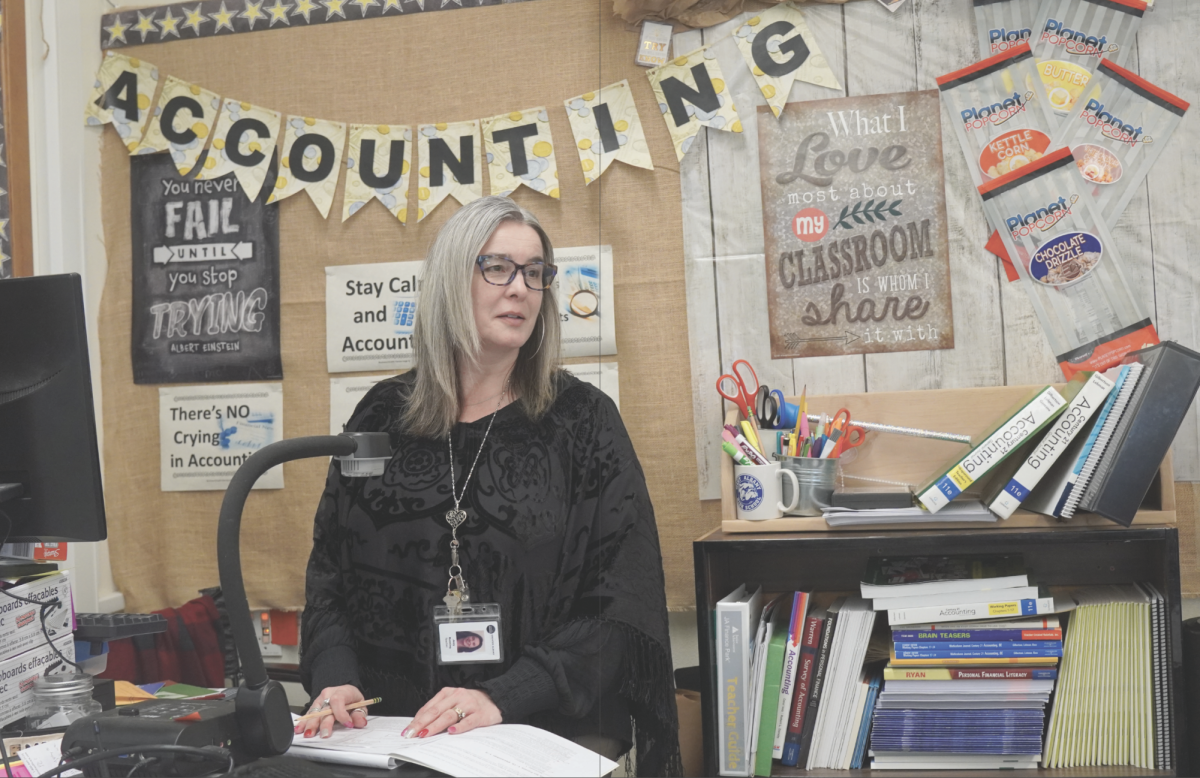From first to last bell, students are unable to use their phones, smartwatches, and headphones, which causes some students to express concern about what it means for getting in contact with family members and how it affects their education.
Some students have expressed frustration with the inability to locate friends throughout the school day, which, in turn, has had a positive effect on student life by encouraging students to talk to one another face-to-face rather than hide behind a screen.
“I can’t really find my friends, and if they send me a text, I have to look after school. But that might be too late,” junior Godfrey Conn said. “The people I have classes with, I have to become friends with.”
Not only has student interaction increased during lunch, but it can also be observed throughout the day. “Every kid would be in [the classroom] already sitting in here on their phone, and now they’re standing, and I can say, specifically for my ninth graders, that they are talking [to each other],” English teacher Krissy Rasmussen said.
While the phone ban has posed challenges for students, its effects have extended beyond West Albany High School.
“In settings where I am hanging out with my friends in person. I’d say the use of my phone has lessened, and it’s like an internalized PTSD from the fear of getting [it] taken away,” senior Mahmoud Rashid said.
The phone policy in previous years was similar to the current executive order; however, the primary difference is that students can’t use their devices during breaks and lunch.
“We had essentially the same rule in place last year, no phones in the classrooms, no earbuds, and it was a constant battle, but because somebody made it a law, I do think that we had the ability to monitor ourselves, and we blew it,” Rasmussen said.
Few staff members in the building would allow students to use their devices for various reasons, such as playing Blookets or Kahoots, or listening to music during work time, but after the phone ban, that is no longer an option.
“I’ve not had anybody say, ‘Well, I really need to listen to my music to do this,’” Rasmussen said. “We had become a little bit entitled, like I have these things, thus I must be allowed to use them, versus, there’s a time and a place.”
While the phone ban provides benefits in classrooms by pushing students to communicate and fostering student engagement, it has created additional challenges for students in the performing and fine arts.
“Whenever I’d audition with Welsh and McFadden, having my phone on me was really important, because I’d be practicing right before the audition, and I wanted to get one last listen before recording,” Rashid said.
In a similar vein, some students who participate in an art class or the fine arts would use digital references on their phones to complete their assignments.
“I have to print out all the pictures that I want,” Conn said. “Luckily, it’s in color, but it doesn’t have the same magnification. I have to zoom in extra on everything, and the measurements and the portions are off.”
Phones, headphones, and smartwatches used to be a focal point of everyday life and communication, but were causing issues in student engagement.
“It’s just something we’ve convinced ourselves [we need]. It’s a useful tool, when in actuality, the benefits were not continuing to outweigh the harm it was doing to us,” Rasmussen said.


